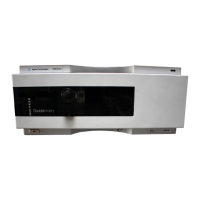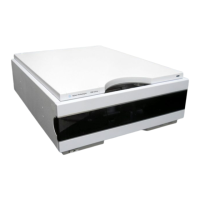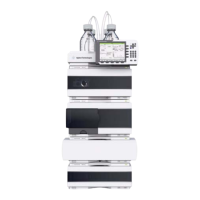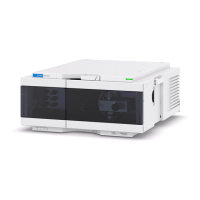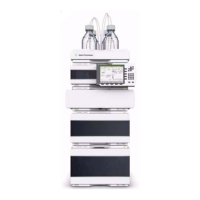Agilent InfinityLab LC Series VWD User Manual 72
5 Optimizing the Detector
Match the Flow Cell to the Column
Flow Cell Path Length
Lambert-Beer’s law shows a linear relationship between the flow cell path length
and absorbance.
where
Therefore, flow cells with longer path lengths yield higher signals. Although noise
usually increases little with increasing path length, there is a gain in the
signal-to-noise ratio. For example, in Figure 21 on page 73 the noise increased by
less than 10 % but a 70 % increase in signal intensity was achieved by increasing
the path length from 6 mm to 10 mm.
When increasing the path length, the cell volume usually increases — in the
example from 5 – 14 µL. Typically, this causes more peak dispersion. As
demonstrated, this did not affect the resolution in the gradient separation in the
example that is shown below.
As a rule-of-thumb, the flow cell volume should be about 1/3 of the peak volume
at half height. To determine the volume of your peaks, take the peak width as
reported in the integration results multiply it by the flow rate and divide it by 3).
T is the transmission, defined as the quotient of the intensity of the transmitted light I
divided by the intensity of the incident light, I
0
,
e is the extinction coefficient, which is a characteristic of a given substance under a pre-
cisely-defined set of conditions of wavelength, solvent, temperature and other parame-
ters,
C [mol/L] is the concentration of the absorbing species,
d [m] is the path length of the cell used for the measurement.

